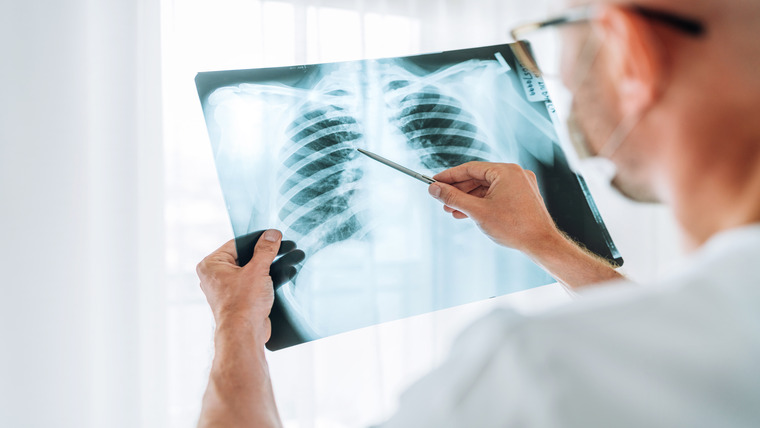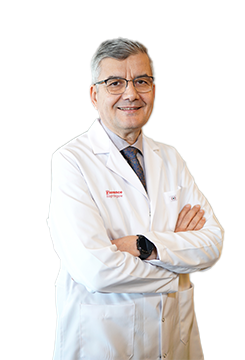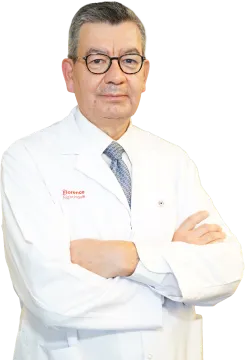
What is the Chest Diseases Department and What Diseases Does It Cover?
The Chest Diseases department is an important medical specialty that diagnoses, treats and monitors diseases related to the respiratory system and the chest. This department provides a wide range of services including the lungs, bronchi, pleura (lung membrane) and other intrathoracic organs.
About the Chest Diseases Department
The department of chest diseases is a branch of medicine that deals with the diagnosis, treatment and follow-up of respiratory system diseases. This department studies diseases related to the lungs, bronchi, trachea and other respiratory tracts. Chest disease specialists evaluate respiratory functions and play an important role in the management of various respiratory tract diseases.
According to the World Health Organization (WHO), approximately 3 million people die each year worldwide from chronic obstructive pulmonary disease (COPD). The department of chest diseases is critical in the treatment of serious respiratory diseases such as COPD.
Who is a Chest Diseases Specialist and What Are Their Duties?
A pulmonologist is a doctor who specializes in diagnosing and treating diseases of the respiratory system.
Duties of Chest Diseases Specialists include:- Reviewing patients' medical history and performing physical examinations
- Perform and evaluate pulmonary function tests
- Interpreting lung imaging tests
- Treating respiratory infections and chronic diseases
- Developing smoking cessation programs and disease prevention strategies
What Diseases Does Chest Diseases Include?
The department of chest diseases covers many diseases related to the respiratory system.
These diseases include:- Asthma
- Chronic Obstructive Pulmonary Disease (COPD)
- Pneumonia
- Tuberculosis
- Lung Cancer
- Pleural Effusion
- Pulmonary Embolism
- Interstitial Lung Diseases
- Sleep Apnea
- Occupational Lung Diseases
According to the "European Lung Health" report published by the European Respiratory Society (ERS) in 2020, the most common of these diseases is COPD.
What are Chest Diseases Examinations?
Chest Diseases examinations may vary depending on the patient's complaints and condition.
Basic examinations include:- Physical Examination: Observation of the rib cage, palpation, percussion and auscultation.
- Respiratory Function Tests: Spirometry, diffusion capacity measurement.
- Imaging Methods: Lung X-ray, Computed Tomography (CT), Magnetic Resonance Imaging (MRI).
- Blood Tests: Complete blood count, C-reactive protein (CRP), sedimentation rate.
- Sputum Culture and Analysis
- Diagnostic and Interventional Bronchoscopy
- Allergy Tests
What Methods Are Used in Chest Disease Treatments?
The methods used in the treatment of chest diseases vary depending on the type and severity of the disease.
Commonly used treatment methods include:- Drug Therapy
- Oxygen Therapy
- Pulmonary Rehabilitation
- Surgical Interventions
- Radiotherapy (for lung cancer)
- Immunotherapy
- Smoking Cessation Programs
- Bronchoscopic Treatments
When Should You Go to the Chest Diseases Department?
If any of the following symptoms are observed, the Chest Diseases department should be consulted:
- Persistent Cough: A cough that lasts longer than three weeks could be a sign of a serious underlying respiratory problem. This could be a symptom of conditions such as chronic bronchitis, asthma, gastroesophageal reflux disease or, in rare cases, lung cancer. A persistent cough is a major signal from your body that something is wrong.
- Shortness of Breath: Having difficulty breathing or feeling short of breath could be a sign of heart or lung problems. This could be caused by conditions such as asthma, chronic obstructive pulmonary disease (COPD), pneumonia, or pulmonary embolism. Shortness of breath, especially if it starts suddenly or gets worse, may require immediate medical attention.
- Chest Pain: Chest pain can be caused by a variety of things, from simple muscle pain to life-threatening heart problems. Lung problems such as pleurisy, pneumonia, or pulmonary embolism can also cause chest pain. Persistent or severe chest pain should always be taken seriously and evaluated.
- Coughing Up Blood: Coughing up blood (hemoptysis) can be a serious condition. It can range from relatively harmless conditions like bronchitis to serious diseases like tuberculosis or lung cancer. In either case, it requires immediate medical evaluation.
- Unexplained Weight Loss: Losing weight without any apparent reason could be a sign of something seriously wrong with your body. Chest diseases such as lung cancer, tuberculosis or other chronic lung diseases can cause unexplained weight loss.
- Recurrent lung infections: Frequent lung infections may indicate a problem with the immune system or a structural abnormality in the lungs. Conditions such as chronic bronchitis, bronchiectasis or cystic fibrosis can lead to recurrent infections.
- Sleep Apnea Symptoms: Defined as a pause or shallowness of breathing during sleep, sleep apnea can lead to serious health problems. Symptoms include loud snoring, nighttime breathlessness, excessive fatigue during the day, and difficulty concentrating. If left untreated, it can increase the risk of heart disease, high blood pressure, and stroke.
If any of these symptoms occur, it is important to see a pulmonologist for early diagnosis and treatment. In some cases, these symptoms may require immediate medical attention.
What is done during a chest disease examination?
During the chest diseases examination, the patient's general health status and respiratory functions are evaluated in detail.
The process typically involves these steps:- Anamnesis: Detailed information is obtained about the patient's complaints, medical history and lifestyle.
- Physical Examination: The doctor listens to the patient's breathing sounds and observes chest movements.
- Respiratory Function Test: Lung capacity is measured with a spirometry device.
- Oxygen Saturation Measurement: The oxygen level in the blood is measured with a pulse oximeter.
- Necessary Imaging and Laboratory Tests: Additional examinations such as X-ray, CT, and blood tests may be requested.
- Bronchoscopy: In lung cancer and some chronic inflammatory diseases, biopsies can be taken from the bronchus, from the lung, or from lesions around the bronchus with endobronchial ultrasound (EBUS).












